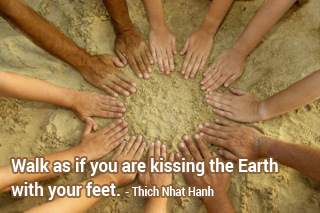
Philosophy of Mindfulness

The tenet of mindfulness is: heightened awareness/attunement to presence. This includes being present for activities, objects, sensations, thoughts, feelings, relationships, etc. In the context of psychotherapy, being mindful involves focusing on connection between therapist and client. As healing dyad, the spirit of “I-Thou” relation is upheld as sacred. This relationship is the path of healing and vehicle for transforming negative states into positive.
Mindfulness techniques are essentially mathematical. How? All meditation systems aim either toward one or zero. The former (one) uses concentration on a single point–toward unity. The latter (zero) uses insight into the void–toward emptiness. These two are mutually exclusive. They are NOT binary nor linear. Philosophy of MindfulnessUpon deeper practice, we experience each as facets of a single experience, one facilitating the other, both synonymous, and existing simultaneously as spiral. Below are descriptions of the ‘concentration’ and ‘insight’ (mindfulness) paths:
Concentration Path: Our stream of thought is normally scattered, random, chaotic. We’re plagued by this all day long! Our goal in meditation is to focus thought by fixing attention on one focus, e.g. idea, object, emotion, sensation, etc. Initially, our mind is directed toward the “object,” but eventually moves into it and becomes absorbed by it, penetrating and becoming one with it, such that the object is the only thing in consciousness for that finite time. This method has multiple successive points through which we enter and pass. The first “stage” is termed the “Access state,” where we’re aware of being bombarded by thoughts, sensations, feelings, etc.
Insight Path or Mindfulness (commonly known as Vipassana): We methodically attend to our bare experience, moment to moment, without preconceived perception/judgement. We note our present and dismiss it, moving onto the next, and so forth. We will be interrupted by wandering thoughts, e.g. “Am I doing this right?” We simply note every movement of our mind, and as we note our mental straying, our concentration sharpens. We have identified four types of mindfulness, all identical in function but different in focus:
- Body (posture, pain, thirst, sensation, motion, etc.)
- Feelings (myriad spontaneously arising emotion-energy in motion)
- Mental Objects (WHAT are we thinking about, e.g. the contents of our mind–including planning and remembering?)
- Mental Process (HOW are we thinking about our mind contents–also known as “flow”?).
